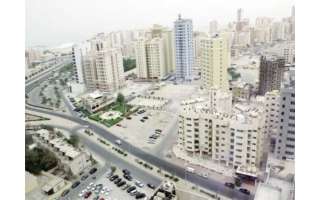Latest News
- 123 Garages Closedown For Fixing Loud Mufflers For Vehicles In J...
- Court Upheld 10-year Jail Term For Manslaughter
- An Expatriate Accuses His Ex-wife Of Forging 36 Invoices
- Kuwait's Mubarakiya Meat Market Inspection Raises Hygiene Concer...
- Human Trafficking And Migrant Worker Smuggling Task Force Formed...
- Stop Responding To Fake Messages!
- PAM Enforces Gov’t Contract Kuwaitization
- To Curb Pollution, Kuwait Considers Using Used Tires For Energy
- Sixty Percent Of The Oil Sector Workforce Are Eligible For Incen...
- Authorities Arrested 6 Expats For Illegal Sale Of Subsidized Die...
- Health Ministry And Zain Launch Hotline To Report Violence Again...
- Kuwaitis And Expatriate Jailed For 5 Years In A New Exam Paper L...
The Streets Of Kuwait

You can tell a lot about a country from the condition of its streets. How well maintained they are, how wide and well painted and signed. There are a lot of distinctive features noticeable on Kuwait’s streets.
The wide, tree lined avenues that shape the local Kuwaiti neighborhoods stand in stark contrast to the pitted and pocked thoroughfares of the lower income expatriate areas of Farwaniya and Jleeb Al Shuyoukh. Streets tell a story of economics, of politics and of culture. An area with streets garlanded by fresh flowers or date palm trees is an area well cared for. This is especially true in arid Kuwait where every flower, plant, tree and shrub must be watered by a hose planted alongside.
Streets with many pockmarks, flooded by open sewage or littered with broken sidewalks and dilapidated signboards reads of poverty, of neglect and lack of community. It tells visitors without a word that the area is not looked after by the neighborhood itself nor the government. Streets can also take on a personality, a character ascribed to it based on traffic congestion, decoration and flora, location, businesses and ultimately how well its maintained or how long it has been neglected. In Kuwait there are many streets that lack basic necessities like sidewalks, crosswalks, bike lanes, adequate signage and center medians. Why does it matter? Why should Kuwait care about the quality or beauty of its roads? Streets are the terrain, the domain of all. By building sidewalks and pedestrian routes, city planners can encourage more foot traffic (at least during the cooler, winter months).
Biking lanes can further help reduce traffic in highly congested areas like Kuwait City or Salmiya. More time spent outdoors walking or biking will also encourage a higher standard of health among residents – an important factor for a country with one of the highest rates of obesity and diabetes in the world. While it’s true that Kuwait’s summer temperatures make it impossible to spend much time outside, there are more than six months out of the year when biking or walking are perfectly reasonable.
Livable streets allow for pedestrians, bikes and public transport as well as encourage slower traffic speeds through use not only of speed bumps (ubiquitous in Kuwait) but also shorter curbs, street trees and planters along with public transport can add value to the country by beautifying the roads and lanes and make Kuwait’s streets more pleasant for everyone.
Source : Kuwait Times
Trending News
-
 AstraZeneca Admits Covid Vaccine Can Cause Rare Si...
29 April 2024
AstraZeneca Admits Covid Vaccine Can Cause Rare Si...
29 April 2024 -
 Work Permits Will Be Issued For One Year Under The...
27 April 2024
Work Permits Will Be Issued For One Year Under The...
27 April 2024 -
 Kuwait Unveils Monumental Solar Energy Project For...
06 May 2024
Kuwait Unveils Monumental Solar Energy Project For...
06 May 2024 -
 Gulf Electrical Interconnection Project Will Boost...
04 May 2024
Gulf Electrical Interconnection Project Will Boost...
04 May 2024 -
 Ministry Of Health Amend 'nature Of Work' Allowanc...
28 April 2024
Ministry Of Health Amend 'nature Of Work' Allowanc...
28 April 2024 -
 In 3 Months, Kuwaitis And Expats Bought 4 Tons Of...
01 May 2024
In 3 Months, Kuwaitis And Expats Bought 4 Tons Of...
01 May 2024 -
 Kuwait Banks Seek Clarity From Central Bank On Cit...
04 May 2024
Kuwait Banks Seek Clarity From Central Bank On Cit...
04 May 2024 -
 Kuwait Cracks Down On Bachelors
02 May 2024
Kuwait Cracks Down On Bachelors
02 May 2024 -
 Expat Deported For Inciting Child Murder
28 April 2024
Expat Deported For Inciting Child Murder
28 April 2024 -
 Kuwait Organizes 30 Events To Protect Children Fro...
04 May 2024
Kuwait Organizes 30 Events To Protect Children Fro...
04 May 2024












Comments Post Comment